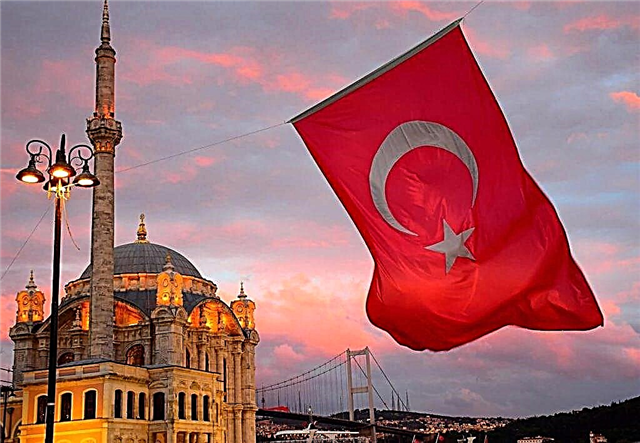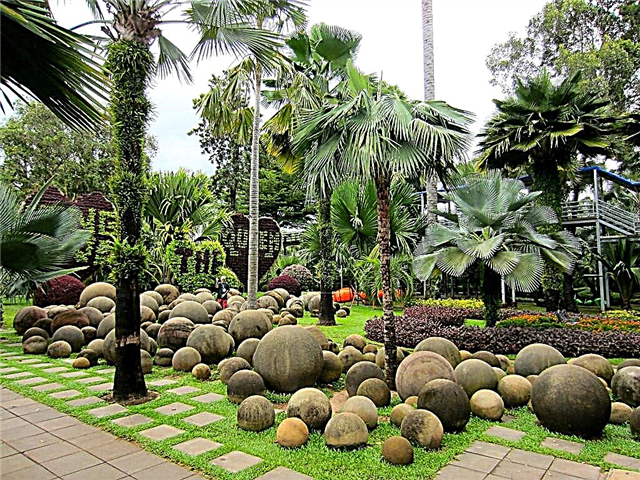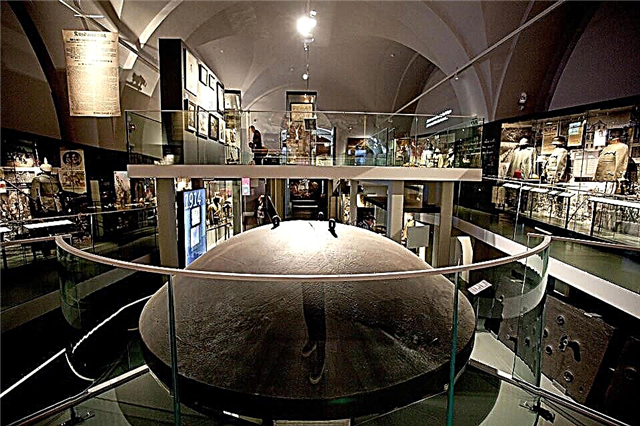The temple of the village of Susanino, lying in the vastness of the Kostroma region, is familiar to everyone living in Russia since childhood. The Church of the Resurrection of Christ has long been considered one of the Russian symbols. After all, it was here that Aleksey Kondratyevich Savrasov wrote the famous lyrical landscape “The Rooks Have Arrived”. And since the end of the 20th century, the old church has housed a museum exposition dedicated to the feat of the Kostroma peasant Ivan Susanin.
History of the Church of the Resurrection of Christ
In former times, the village of Susanino, where the temple stands, was called Molvitin. It is noteworthy that it is not directly related to the feat of Ivan Susanin. The settlement was given such a name only in 1939. And the name change was explained by the fact that the village was the center of the Susaninsky district, on the lands of which the Kostroma peasant performed his feat.

In the chronicles, a settlement located on a hill between the Shacha and Volzhitsa rivers has been mentioned since 1587. Here, at the intersection of roads leading to Kostroma, Galich, Totma and Vologda, was the center of the local iron ore industry. In the Time of Troubles, the village was ruined by the Poles.
It is known that by the beginning of the 17th century there were three wooden churches - a tent-roofed one in honor of the Archangel Michael, a small winter one, dedicated to Nicholas the Wonderworker, and a church in honor of Tsar Constantine. Next to them was a fenced-in cemetery and several wooden cells where elderly beggars lived on church alms. The last time the Molvitin wooden churches were mentioned in written sources was in 1678. Historians suggest that the dilapidated churches were then demolished and a new brick church was erected.

The initiator of the construction was a local landowner, a representative of one of the most ancient boyar families - Peter Mikhailovich Saltykov, who held high posts at the court of Tsar Alexei Mikhailovich. Presumably, the church in the village was erected by masters invited from Yaroslavl. The construction was fully completed by 1690.
It was decided to consecrate two chapels of the Resurrection Church in memory of the old Molvitin churches - the Archangel Michael and St. Nicholas. In addition, many icons from the already dismantled wooden churches were transferred to the new church. The iconostasis was installed here in 1725 and the icons created by master icon painters from Kineshma were placed in it. In 1838, Kostroma iconographers painted the entire temple quadruple and the altar room from the inside. How the new Molvitinsky stone church looked originally, now we can only guess. Because from the end of the 17th century to the present day, only one part of it has not been reconstructed - the tall slender bell tower.

Residents of Molvitino have long received income from the manufacture of hats and caps. In addition, felting, cheese making and horse breeding were developed here. That is why many of the villagers did not adhere to the traditional peasant way of life and did not work in the field. From year to year, Molvitino grew and was considered a fairly prosperous village. There was great trade here. And the annual horse fair, where up to four hundred horses were put up for sale, was the 4th largest in the Kostroma province.
By the beginning of the last century, in addition to the Resurrection Church in the village, there were the Trinity Church at the local cemetery and the Intercession Church of the Church of the same faith. The old Church of the Resurrection, reconstructed and renovated several times, was in very good condition, and its bell tower had 30 bells.

After the 1917 revolution, the old church was not touched for the first time. However, in 1922, members of the provincial commission removed all church valuables from it - frames for icons made of silver, sacred vessels and icon lamps. In the early 1930s, the Soviet government began to wage an active anti-religious campaign. All the bells were removed from the Resurrection Church. And in the middle of 1938, the church itself was closed, throwing all the icons that were kept on the street. Some of the icons were immediately burned, and some lay for a long time in the middle of the yard garbage. True, some of the icons were saved by local residents.
At the same time, the cross that crowned it was thrown off the bell tower, and the heads with drums were dismantled at the church itself. The vacated refectory premises were used as a granary. Then there was a shoemaker's shop and warehouses of the regional consumer cooperation.

In 1971, when the villagers celebrated the 100th anniversary of the artist Savrasov's visit to Molvitino, the fate of the old church changed for the better. It was decided to restore this monument of Russian architecture of the 17th century in order to place a regional museum in it. Restoration work designed by architect A.P. Chernov started in 1977 and took 11 years. The temple was restored to its original appearance in many respects. It acquired a five-domed dome topped with gilded crosses, and the old bell tower, devoid of metal cladding, opened in all its glory.
On September 17, when the 375th anniversary of the feat of Ivan Susanin was solemnly celebrated in the village, the temple began a new life as a museum. The main exhibits for him were collected in the 50s of the last century by the famous local historian Boris Vasilyevich Belotserkovsky (1893-1971). Nowadays, believers from Susanino are asking to give another building for museum exhibits and to allow the church to be used for its intended purpose.

Museum of the exploit of Ivan Susanin in the Church of the Resurrection of Christ
The museum located in Susanino is considered one of the branches of the regional museum-reserve. It tells about the place where the Kostroma peasant led the troops of the Poles - the Susaninsko-Isupovsky swamp, as well as about the people who repeated the feat of Susanin during the Great Patriotic War. One of the main expositions is dedicated to members of the Romanov royal dynasty.
The museum halls display an original saber of a hussar of the Polish army, found near the village of Ivashevo, as well as samples of local ceramics and weaving of the early 20th century. In addition, there are permanent exhibitions of paintings and Russian samovars. The doors of the museum are open to visitors every day from 9.00 to 18.00, except Friday and the last Thursday of each month.

How the famous landscape of Savrasov was created
The artist Savrasov came to Molvitino in 1871 to paint sketches for a landscape depicting a spring Russian village with a temple. What time Savrasov spent here and where he stayed is not known. In the village he painted several sketches for his future painting "The Rooks Have Arrived". And on one of these sketches the artist made the inscription "Molvitino".
Later, when creating the landscape itself, the artist worked in his usual creative manner. He was never a simple copyist and often moved away from blindly following nature. In the landscape depicted, Savrasov brought the bell tower and the temple closer together, rearranged them in places and, moreover, made the bell tower itself a little higher than it really is. The artist began to paint the picture in Yaroslavl, and finished it, it is believed, already in Moscow. This beautiful landscape was soon bought from the painter P.M. Tretyakov to this day occupies an honorable place in the halls of the famous Tretyakov Gallery. A memorial plaque dedicated to A.K. Savrasov.

The architecture of the temple and its interior decoration
The composition of the five-domed Resurrection Church is typical of religious buildings built at the end of the 17th century. The altar apse adjoins the two-height quadrangle from the east, and the refectory and bell tower on the west side. On the facades of the quadrangle there are rectangular windows decorated with platbands. The refectory windows are doubled, and their platbands have a keeled end.
The slender bell tower of this church stands out among the buildings of this purpose.In its composition and decor, it is very reminiscent of the Yaroslavl candle-bell tower of the famous temple complex in Korovniki... The deaf octahedral pillar of the bell tower stands on a rectangular base. And in the tier of bells, three rows of dormer windows, decorated with kokoshniks, are made.

Painting by Alexei Savrasov - The Rooks Have Arrived. 1871 State Tretyakov Gallery, Moscow
How to get to the Church of the Resurrection of Christ
The temple is located in the center of the village of Susanino, at st. Soviet, 33A. Regular buses go here from Kostroma, following to Susanino and Bui. By car, the distance from the regional center to the village (62 km) can be covered in an hour.
Attraction rating:











